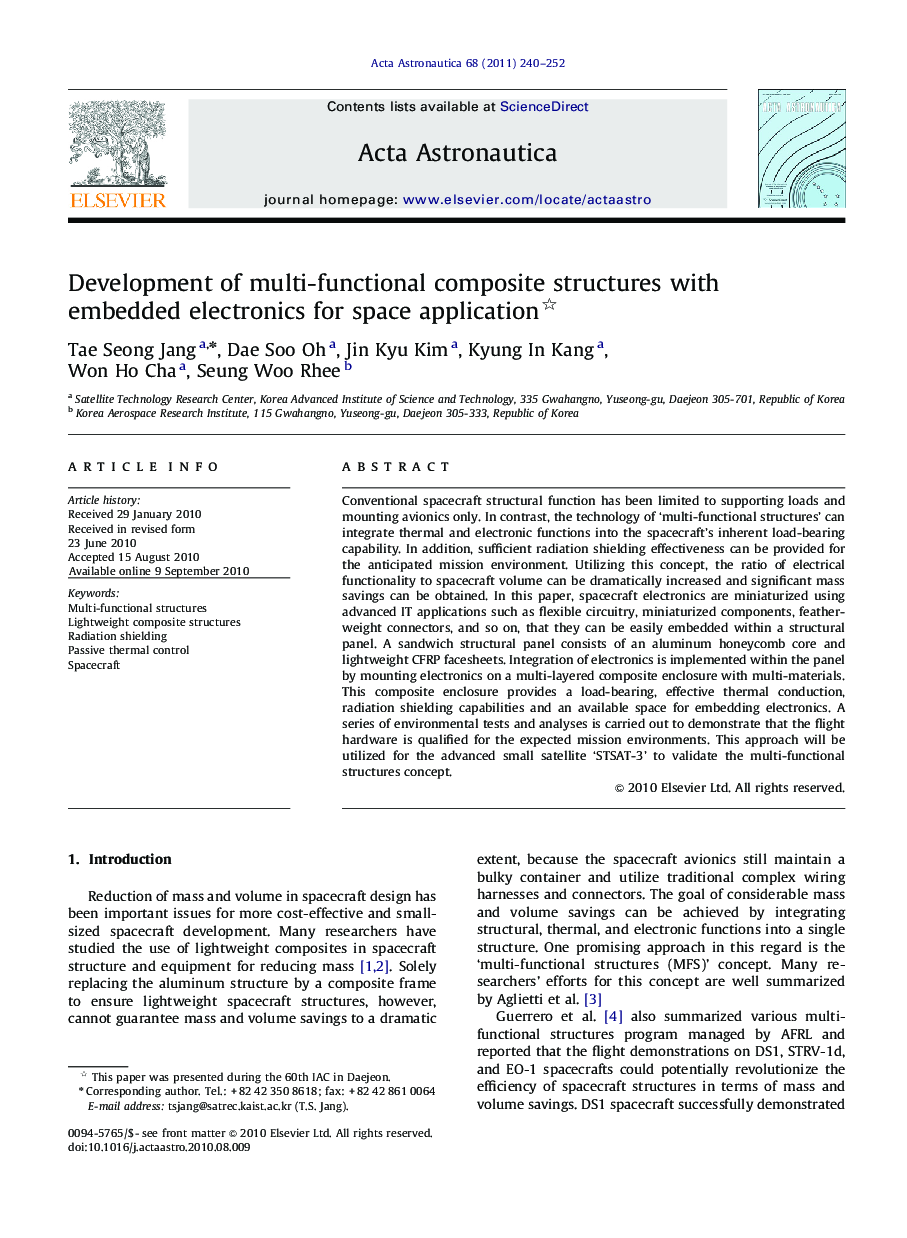| Article ID | Journal | Published Year | Pages | File Type |
|---|---|---|---|---|
| 1716215 | Acta Astronautica | 2011 | 13 Pages |
Conventional spacecraft structural function has been limited to supporting loads and mounting avionics only. In contrast, the technology of ‘multi-functional structures’ can integrate thermal and electronic functions into the spacecraft’s inherent load-bearing capability. In addition, sufficient radiation shielding effectiveness can be provided for the anticipated mission environment. Utilizing this concept, the ratio of electrical functionality to spacecraft volume can be dramatically increased and significant mass savings can be obtained. In this paper, spacecraft electronics are miniaturized using advanced IT applications such as flexible circuitry, miniaturized components, featherweight connectors, and so on, that they can be easily embedded within a structural panel. A sandwich structural panel consists of an aluminum honeycomb core and lightweight CFRP facesheets. Integration of electronics is implemented within the panel by mounting electronics on a multi-layered composite enclosure with multi-materials. This composite enclosure provides a load-bearing, effective thermal conduction, radiation shielding capabilities and an available space for embedding electronics. A series of environmental tests and analyses is carried out to demonstrate that the flight hardware is qualified for the expected mission environments. This approach will be utilized for the advanced small satellite ‘STSAT-3’ to validate the multi-functional structures concept.
